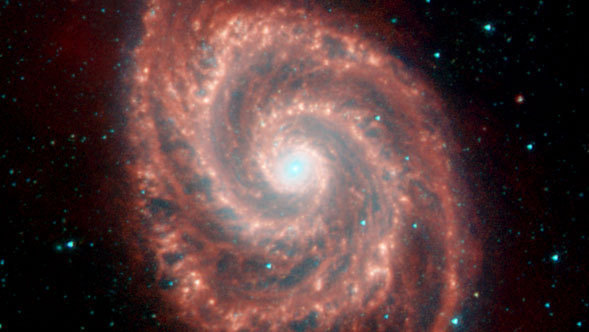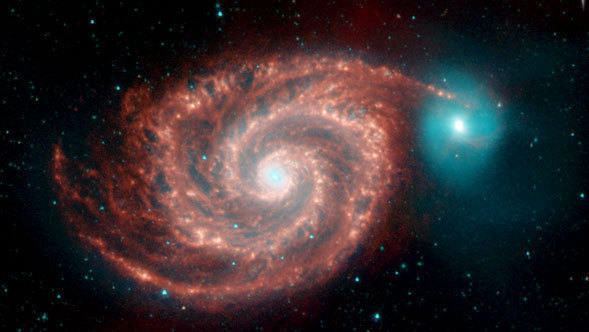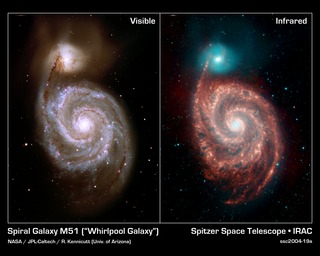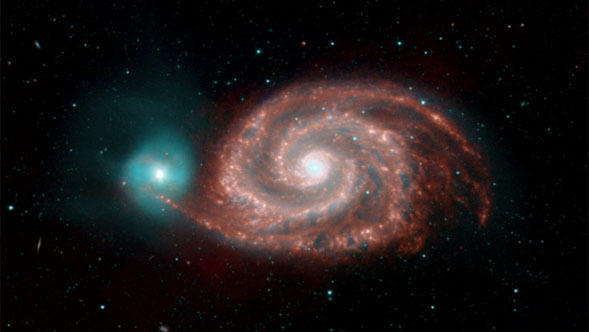
News Release • November 5th, 2004 • ssc2004-19 •
The astronomical community has received a new gift -- bundles of spruced up data from NASA's Spitzer Space Telescope. The data offer fresh infrared views of the universe, including dozens of images of galaxies and stars, and numerous chemical "fingerprints," or spectra, of planet-forming discs.
Unlike raw data released by Spitzer so far, the latest data are part of a pioneering program called Legacy designed to make Spitzer more accessible to astronomers. The data have been processed and enhanced with complementary information from other telescopes.
"Hundreds of astronomers took the time to put together packages of Spitzer data that will benefit other astronomers," said Dr. Lisa Storrie-Lombardi, assistant director for community affairs at the Spitzer Science Center in Pasadena, Calif. "This is truly an altruistic effort to better astronomy as a whole."
An example of one of the new Legacy images -- a stunning view of the Whirlpool galaxy and its dwarf companion -- is available here:
/Media/releases/ssc2004-19/visuals.shtml.
The rest of the images are waiting in a public archive for astronomers to transform them from technical files into false-color, viewable pictures.
The Legacy program seeks to maximize Spitzer's scientific output by not only providing the astronomical community with a wealth of raw data as quickly as possible, but by offering more friendly, or enhanced, data products. These products include stitched together image mosaics, catalogues of space objects, and auxiliary data from other telescopes. NASA's Hubble Space Telescope has a similar program called Treasury, which was modeled after Legacy.
"One of the goals of the Legacy program is to make a large amount of data available to all astronomers very early in the mission so that they can come back and study interesting objects in more detail with Spitzer," said Storrie-Lombardi.
At least three more batches of enhanced data will be released to the Legacy data archive over the next two years. By 2005, all of the raw Legacy data will be available in the general Spitzer archive.
The Legacy program consists of six large projects, which together cover the breadth of the cosmos. They are: the Galactic Legacy Infrared Mid-Plane Survey Extraordinaire (GLIMPSE); Great Observatories Origins Deep Survey (GOODS); Spitzer Infrared Nearby Galaxies Survey (SINGS); Spitzer Wide-area Infrared Extragalactic Survey (SWIRE); Formation and Evolution of Planetary Systems: Placing Our Solar System in Context (FEPS); and From Molecular Cores to Planet-Forming Disks (C2D).
NASA's Jet Propulsion Laboratory, Pasadena, Calif., manages the Spitzer Space Telescope mission for NASA's Science Mission Directorate, Washington, D.C. Science operations are conducted at the Spitzer Science Center. JPL is a division of Caltech. For more information about Spitzer visit www.spitzer.caltech.edu.







